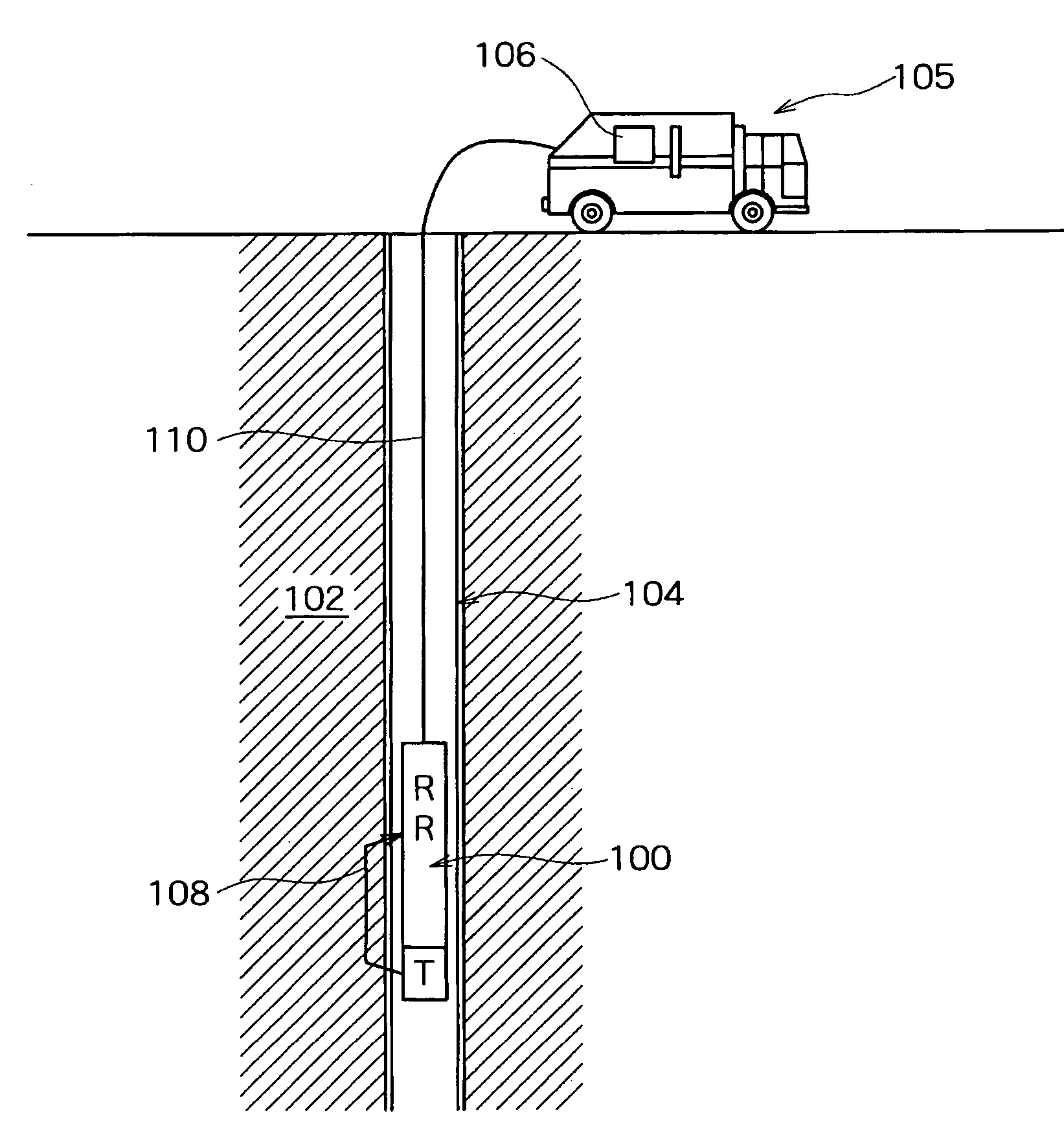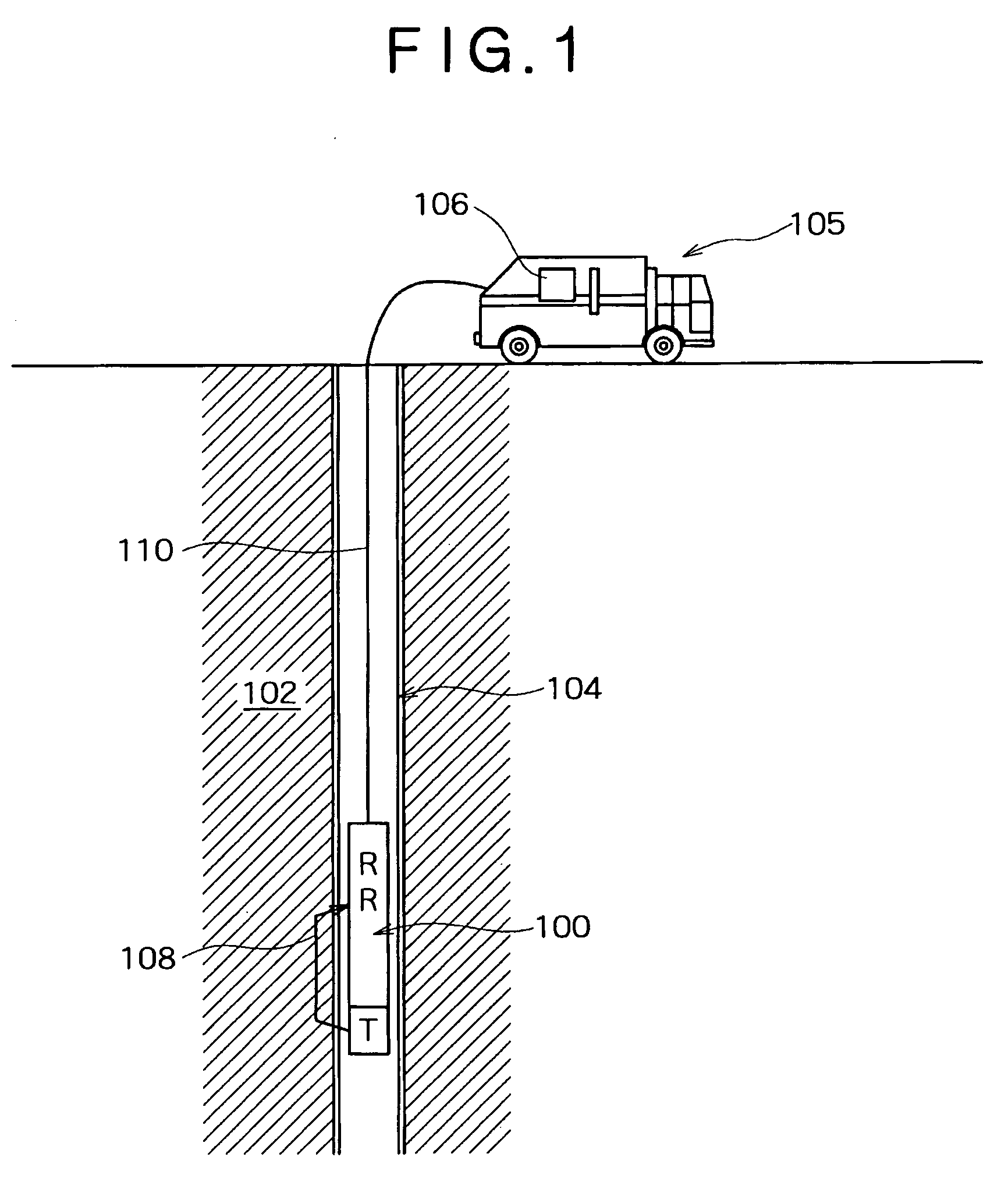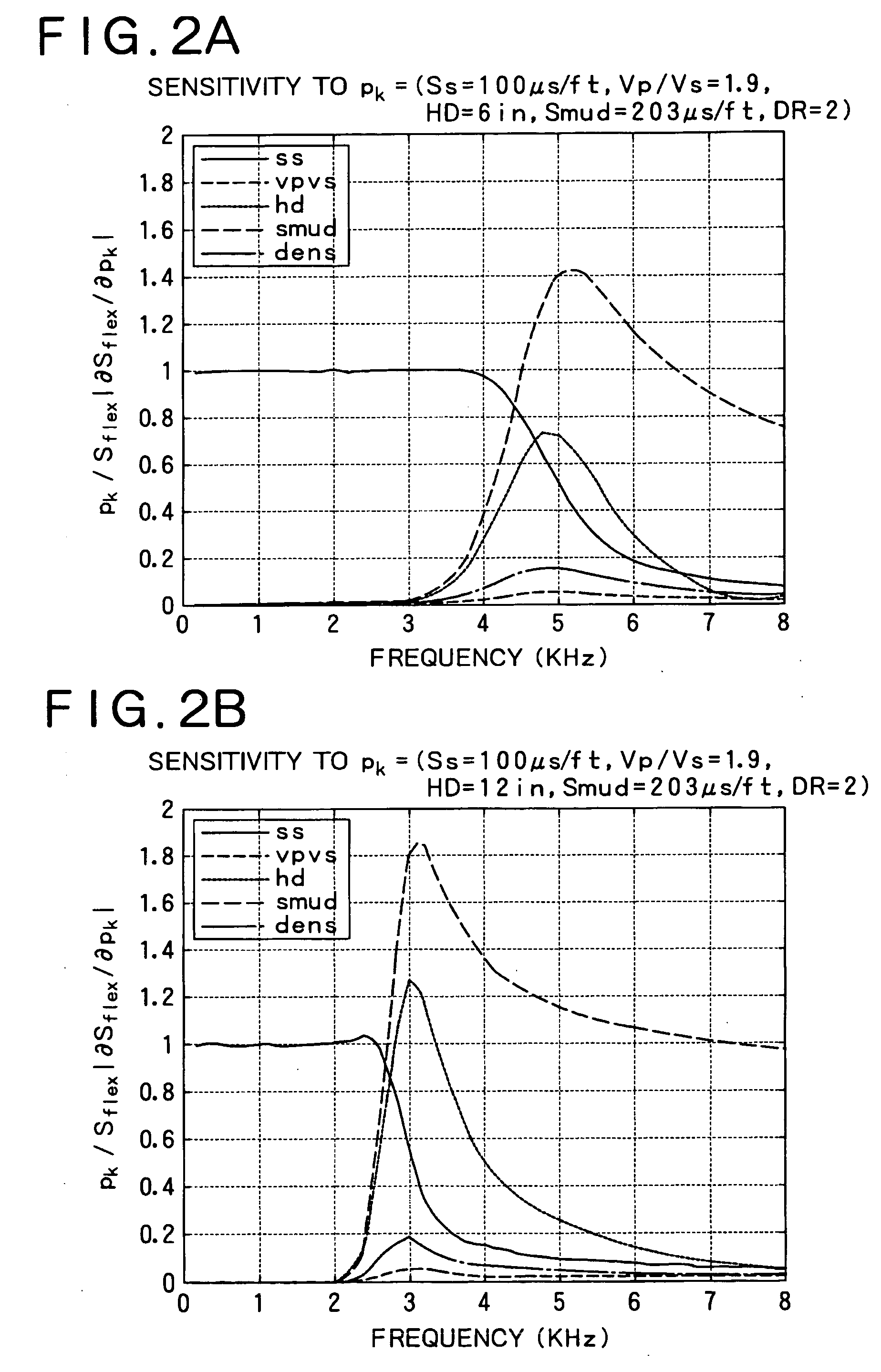Methods for processing dispersive acoustic waveforms
a technology of dispersed acoustic waveforms and methods, applied in the field of methods, can solve the problems of difficult to determine exact values, complicated calculation of formation slowness, and limitations of dstc processing, so as to minimize the possibility of model error in acoustic data, reduce the size of error bars, and minimize the effect of model error
- Summary
- Abstract
- Description
- Claims
- Application Information
AI Technical Summary
Benefits of technology
Problems solved by technology
Method used
Image
Examples
Embodiment Construction
[0023] Turning now to the figures, and in particular to FIG. 1, an acoustic tool (100) is shown adjacent to a homogeneous formation (102). The homogeneous formation (102) is cased with a casing (104). The acoustic tool (100) includes at least 3 transducers consisting of at least one transmitter (T), and at least one receiver (R). In the present embodiment there are two receivers (R) and one transmitter (T), however, many more receivers (R) and transmitters (T) may also be used. The one transmitter (T), two receiver (R) arrangement shown is exemplary in nature and there may be a full array of receivers and / or transmitters, or a single transmitter (T) and receiver (R). The receivers (R) and transmitter (T) are coupled to a computer processor (106) for collecting and processing data from the acoustic tool (100). Also shown is a wave ray path (108) representing a path for a compressional wave caused by activation of the transmitter (T). The receivers (R) may be of different types, inclu...
PUM
 Login to View More
Login to View More Abstract
Description
Claims
Application Information
 Login to View More
Login to View More - R&D
- Intellectual Property
- Life Sciences
- Materials
- Tech Scout
- Unparalleled Data Quality
- Higher Quality Content
- 60% Fewer Hallucinations
Browse by: Latest US Patents, China's latest patents, Technical Efficacy Thesaurus, Application Domain, Technology Topic, Popular Technical Reports.
© 2025 PatSnap. All rights reserved.Legal|Privacy policy|Modern Slavery Act Transparency Statement|Sitemap|About US| Contact US: help@patsnap.com



